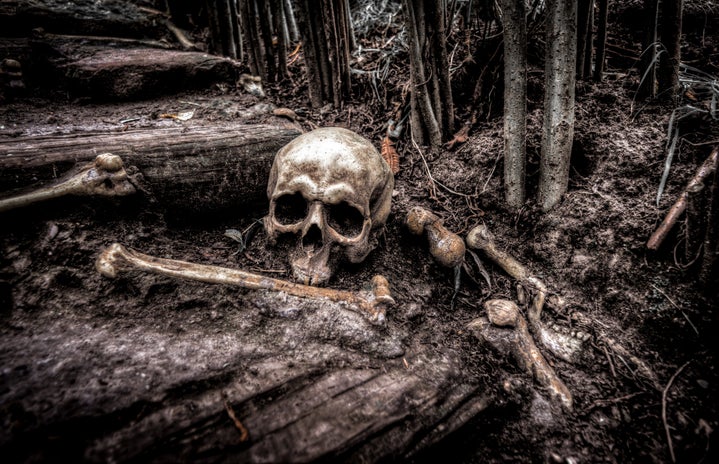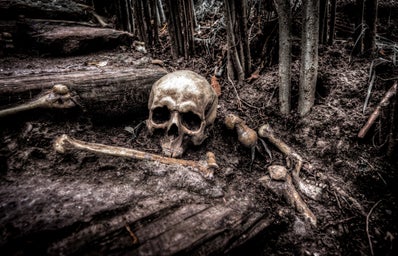When I tell you that there is a creature who is heavily sexualized, associated with the moon, and loses control of its body every 28 days, what is the first thing that comes to mind? Is it a werewolf, or is it a woman? The history of female werewolves has been one fraught with degrading stereotypes, fear of openly sexual women, and flat characters masquerading as strong, empowering women. Running parallel with changing perceptions of womanhood, the ups and downs of female werewolf representation has painted women as victims, villains, and victors, and, in some cases, claims that they’re not monsters at all.
While male werewolves date back to The Epic of Gilgamesh, an epic poem from about 2100-1200 B.C. which is considered the oldest known fictional story, their female counterparts didn’t emerge until much later. The first known mention of a female werewolf is in Topographia Hibernica (c. 1188), an account written by Gerald of Wales that describes Ireland after the Norman invasion. In the text, Gerald tells the tale of a priest who meets two werewolves in the Kingdom of Ossory. The kingdom is cursed by a saint named Natalis, and they must choose two people to live as wolves every seven years. Even though this is the introduction of the female werewolf, she dies without speaking, and it’s the man who approaches the priest to ask that he perform her last funeral rites. She doesn’t have the individuality, freedom, or ferocity that is often associated with the male manifestation of the monster, as her perspective is deemed invaluable and unworthy of verbalization. Unfortunately, similar suppression of the female voice will plague representations of this type of character for quite a few centuries afterwards.
Female werewolves didn’t gain popularity until the rise of witch trials in the 16th and 17th centuries. Witches were accused of turning into wolves through potions or black magic, which were evil methods more heavily associated with women. Their mythos became a cultural body, “a construct and projection” as Leonard Cohen says in his Seven Theses, adapting to changing perceptions of womanhood. The idea of werewolves transformed from people wearing wolfskins to full-fledged shapeshifters, a characteristic associated with deceptive women, thus combining the traditional female monster quality of deceptive seductiveness with a masculine form. They became what Cohen calls a “harbinger of category crisis,” with their hybrid nature serving as “a form suspended between forms that threatens to smash distinctions.” Becoming a wolf gave them the physicality to commit heinous crimes against humanity, while their human forms lured men into a state of complacency. They embodied the fear that women were stepping outside of their designated roles as caretakers. A confident woman was a dangerous one. At least, to the patriarchy.
I have discovered that there are four distinct eras of the monster, with each era representing the evolution of our culture’s perception of women. 1944’s Cry of the Werewolf featured the first on-screen female werewolf and kicked off what I like to call The Classic Era, which would span from 1944-1999. Most of these early depictions were classic femme fatales, feral women whose sexual desires caused them to lose their humanity and often caused their deaths. La Loba, The Howling, and The Company of Wolves all use their characters’ lost humanity as a metaphor for lost innocence and hypersexuality, with the lunar 28-day cycle replacing the menstrual cycle as a symbol of womanhood. The 90s would transform the creature from villain to romantic interest, with the second season of She-Wolf of London turning the supernatural show into a romantic-comedy released under the title Love and Curses. The creature’s sexuality was lowered, but so was its complexity, with its wolf side becoming more fetishized than feared. An American Werewolf in Paris and Buffy the Vampire Slayer would add a more comical aspect to the female werewolf, making her much less of a threat and stripping her of some of her power.
The arrival of the 21st century would mark the beginning of the second era, The Edgy Experimental Phase. Ginger Snaps, Cursed (2005), and Trick ‘R Treat skyrocketed the female werewolf to the heights of horror fame. All of them are relative coming-of-age stories, with the werewolf transformations marking a change into more confident and powerful, albeit also more dangerous women. However, this era also introduced the more sympathetic female werewolf. Angel, Supernatural, Blood and Chocolate, and Being Human UK introduced love interests that could also hold their own. Blood and Chocolate’s Vivian Gandillon is a special standout, refusing to submit to an arranged marriage and choosing to build her own life separate from the pack. While many of these sympathetic icons were background characters or love interests, the female perspective was steadily becoming more accepted, with women finally stepping out from the shadows of society and gaining a greater part in the narrative. They also began to show more than one female werewolf at a time, allowing for greater nuance between characters and creating more female representation.
The third era, The Supernatural Golden Age, began in 2010, with the eruption of supernatural dramas. Once Upon a Time, Grimm, Being Human US, Teen Wolf, Wolfblood, The Originals, and Bitten all featured prominent female werewolves, many of whom had their own complex character arcs. These women were no longer irredeemable villains or stale Mary Sues. Bitten’s Elena Michaels is the main protagonist of the show, a confident but reluctant hero who ends up becoming the alpha of the North American Werewolf Pack. For as strong as these women were, they were often turned into werewolves after being attacked by males, with the subsequent emotional turmoil and lack of body control rarely resulting in male criticism. Infertility became a common plotline, with women being considered monsters for not fulfilling the traditional female roles of caretakers and mothers. Being Human’s Nora Sergeant suffers a miscarriage after being attacked by her boyfriend, and later husband Josh, and Sanctuary’s Erika Myers only embraces her wolf self after receiving encouragement from her eventual husband, with her pregnancy also causing problems due to her lycanthropic nature. Women had gained some individual power but were still tied to their male counterparts.
There was a long drought of female werewolves before 2020 brought us into our current era, The Revival. While they remain significantly less common than their male counterparts, their narratives are far more complex than their predecessors. I Am Lisa tells the story of a young girl who fights back against her assailants, while Wolf Like Me brings the werewolf back into the romantic-comedy genre in a much more palatable light. As more women enter the writers’ room, more variety in the characters’ personalities emerge, with female creators instilling bits of themselves into their creations. Wednesday’s Enid Sinclair is far more energetic than her predecessors, vibrant and optimistic. As female characters evolve and begin to embrace their power instead of being afraid of it, we finally get a more relatable, admirable take on characters who have been classified as monsters instead of powerful beings who demand respect.
Throughout history, female werewolves have served as popular culture’s way of demeaning powerful women, but they’re slowly beginning to get their bite back. In her book, Women Who Run with the Wolves: Myths and Stories of the Wild Woman Archetype, Clarissa Estés argues that wolves and women are very similar beings:
“Wolves and women are relational by nature, inquiring, possessed of great endurance and strength…They are experienced in adapting to constantly changing circumstances; they are fiercely stalwart and very brave. Yet both have been hounded, harassed, and falsely imputed to be devouring and devious, overly aggressive, of less value than those who are their detractors.”
For years, women have been harassed, degraded, and shamed for the parts of themselves that don’t match traditional cultural beliefs. But they are clawing back control of cultural narratives and transforming the character from a man-made “monster” that arose from male insecurity into a symbol of female power and adaptability. And I can’t wait to see more female werewolves biting a chunk out of the oppressive stereotypes that have long kept them captive.


